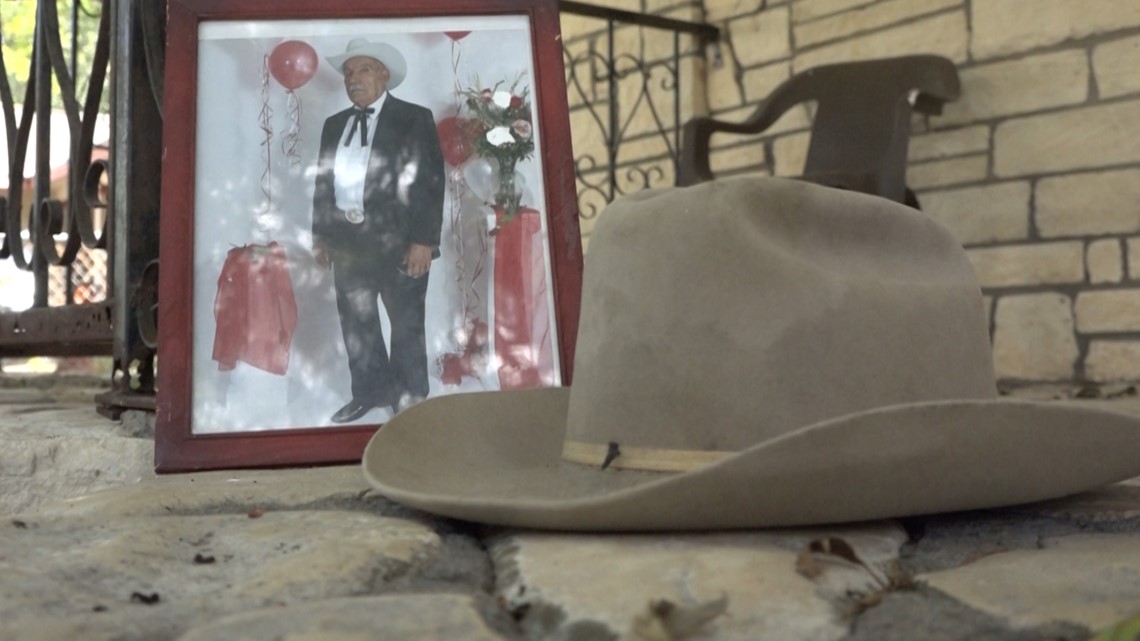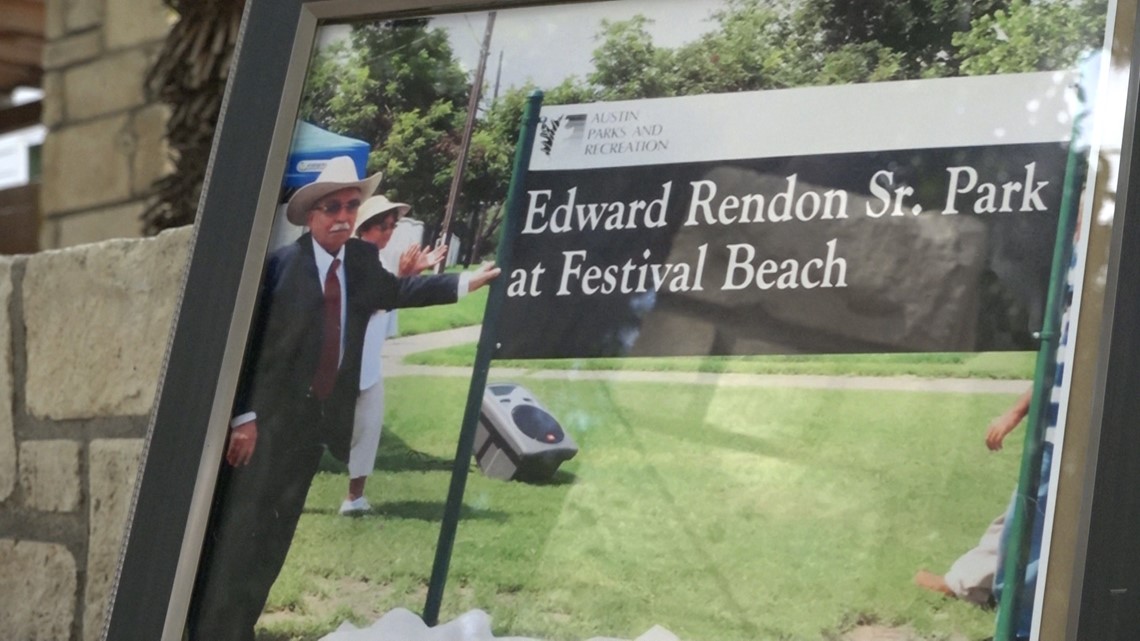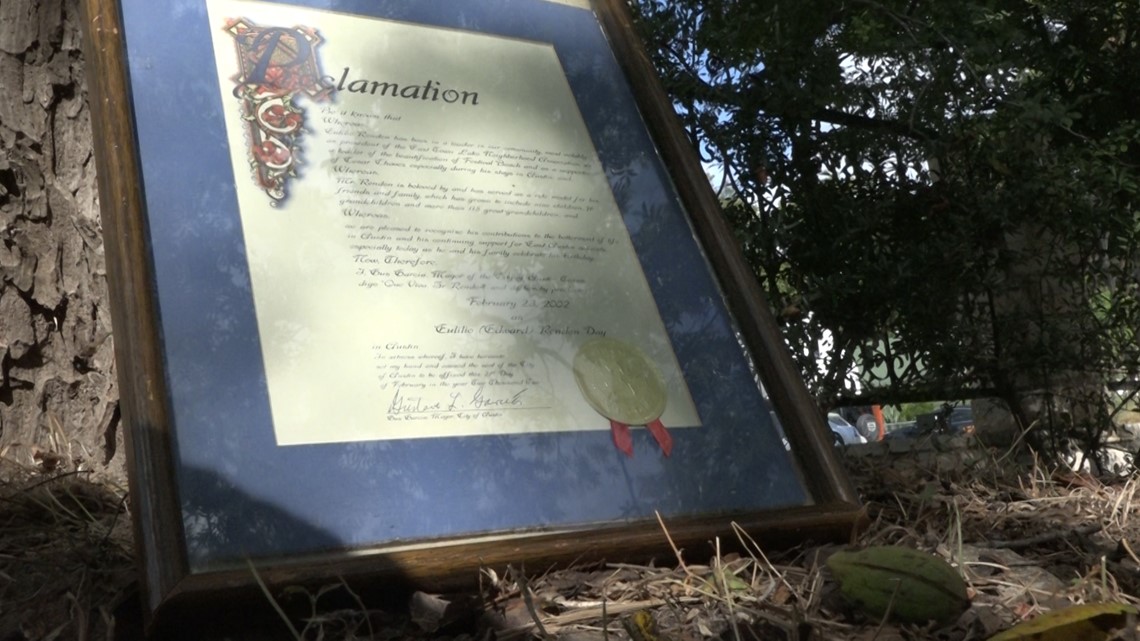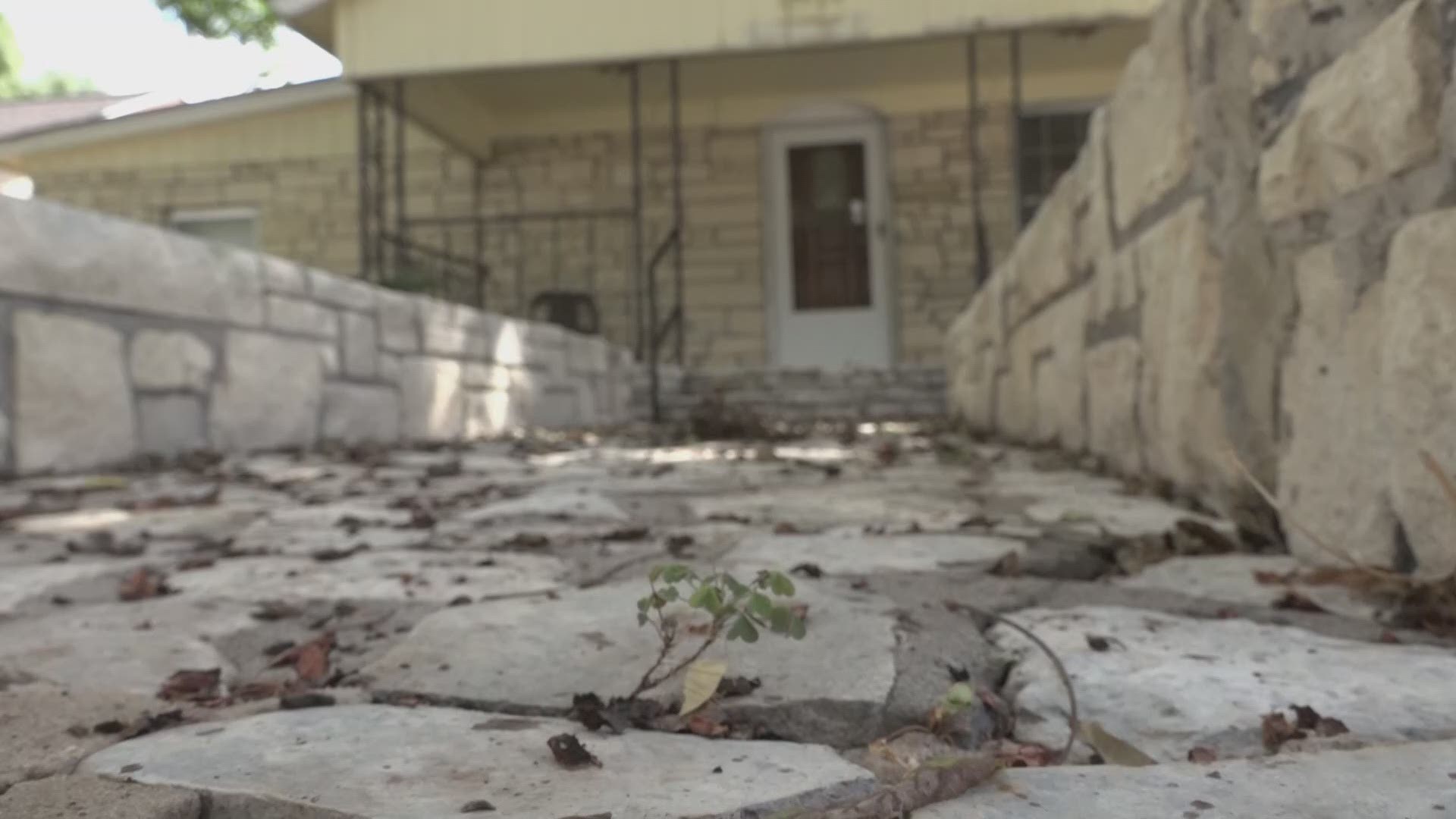AUSTIN, Texas — It's an East Austin home filled with history on a street that some would say has changed a lot over the years.
At 1705 Haskell Street sits a limestone-covered home, next to a tall, aging tree, where Edward Rendon Sr. lived for decades.
"You're looking at a house that was built in the 1930s," said Bertha Rendon Delgado, president of the East Town Lake Neighborhood Association and the granddaughter of Rendon Sr. "There's no other like it."
Rendon Sr. was a well-known East Austin activist for the Latino community. Delgado said his house was home to more than just family, but also community leaders and members.
"He led every movement that you could think of," Delgado said.


Rendon Sr. passed away last year at the age of 91.
His contributions to the community over the years are celebrated through naming Edward Rendon Sr. Metro Park at Festival Beach after him.
Feb. 23, 2002, was proclaimed by the City of Austin as "Edward Rendon Day."




With history in mind, Delgado – along with some family and community members – are advocating for the house to be historically zoned.
"It's very, very, very special to us," Delgado said.
At the Sept. 23 Historic Landmark Commission meeting, there were people who voiced their support for the historical designation and people who opposed.
You can watch the meeting here by clicking on "Item A3" on the right side of the screen.
According to Cara Bertron, deputy historic preservation officer for Austin's Historic Preservation Office, to become a historic landmark, a building must be at least 50 years old and must retain enough historic integrity to convey its significance. In addition, the property must meet at least two of five criteria set forth in the Land Development Code: architecture, historical association, community value, landscape and/or archaeology. You can view a historic zoning application here.
In the case of the Rendon house, in 1971, Rendon Sr. along with family added limestone to a majority of the building's exterior, changing the look of the original home – allowing it to miss the 50-year-old mark it must have to be historically zoned.
RELATED:
Victoria Haase, who was representing the present owner at the meeting, said this causes issues for historic zoning.
"The property does not meet the high degree of integrity that is required to be considered for historical designation," Haase said. "To the degree that the structure you see now is unrecognizable to what was once originally built in its place."
Before Haase spoke, Steve Sadowsky, a historic preservation officer for Austin's Historic Preservation Office, said that staff feels an exception could be made due to its historical value.
“Even though the period of significance is not 100% within the 50-year rule, it does fall under the purview of national bulletin register number 13 that covers historic properties that have achieved their significance in the last 50 years," Sadowsky said. "Staff would argue that despite the modifications to the house, this is the house that represents the person being commemorated and that the changes to the house should definitely be considered as an exception to our normal operating procedure."
After both supporters and the opposition made their voices heard, the commission voted to postpone the case until its Oct. 28 meeting.
"If this became [a] historical landmark, it would be so – it would be like we accomplished our goal – for Grandpa," Delgado said.
PEOPLE ARE ALSO READING:

